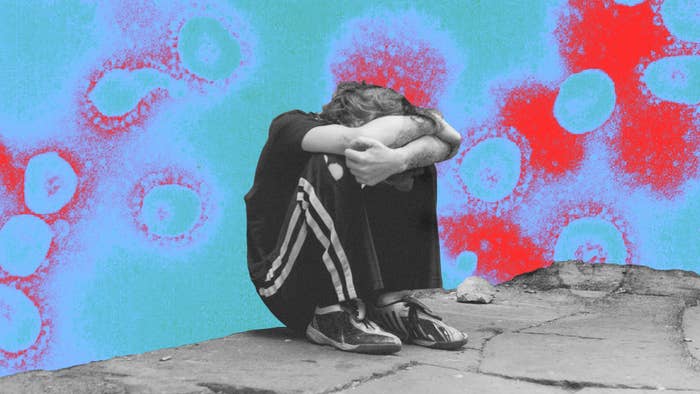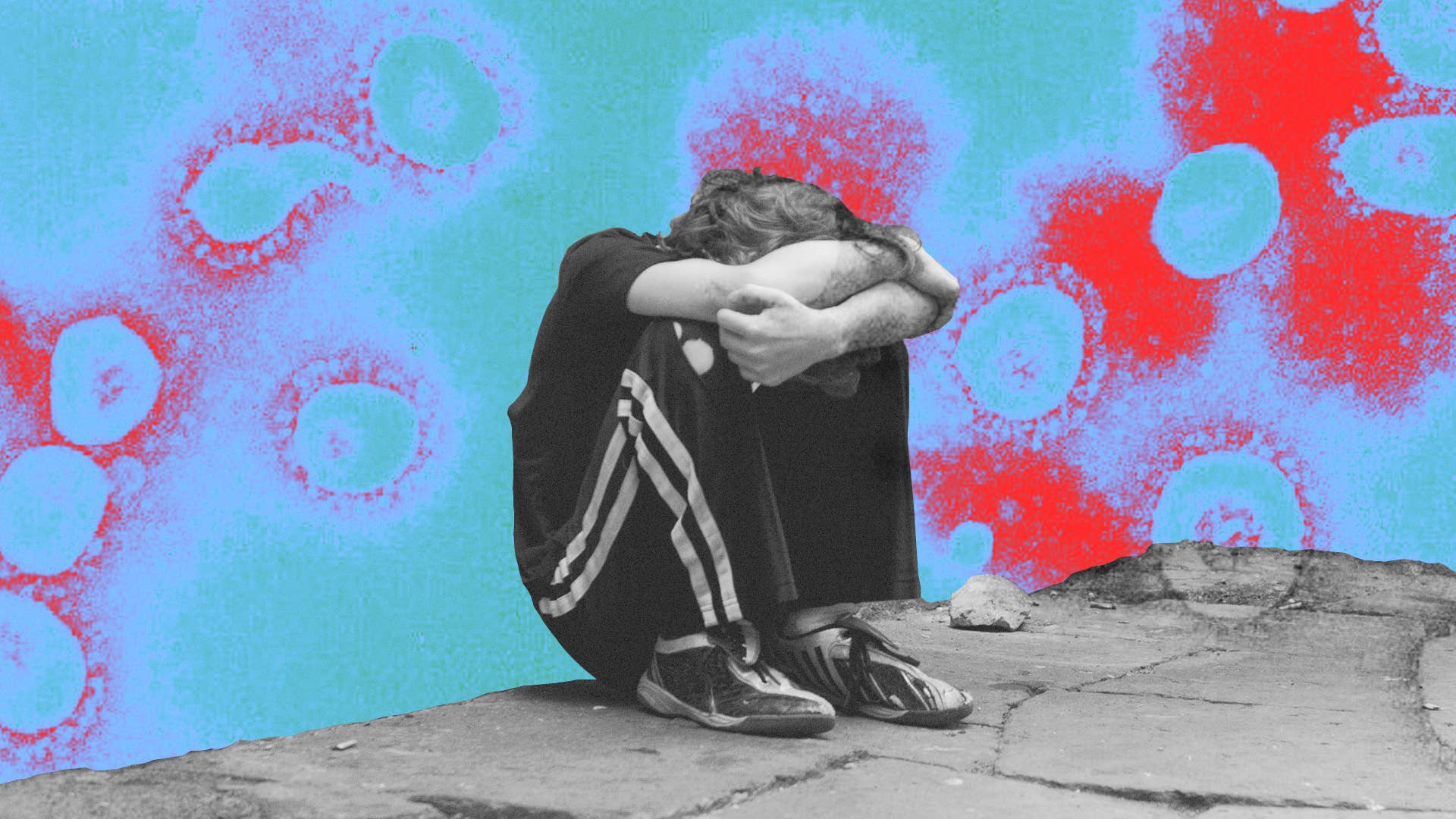
Life hasn’t been easy for 18-year-old Lereto Reyes. A native of Los Angeles, they recently decided to leave their home this past April, after years of mental and physical abuse.
Reyes is now staying at an emergency shelter in Downtown L.A. in a single room. While trying to get back on their feet, Reyes has something else to be concerned about beyond the violence they were subjected to in their previous home: COVID-19 and the ways it is further marginalizing the LGBTQ+ community.
“I just feel really alone in the process,” Reyes says. “I’m learning that there are limited services for people like me. I feel like I am back where I was three years ago.”
Reyes deals with severe depression and anxiety, and worries that now, because of COVID-19, it might be harder to get the care and assistance that they may need should they have a panic attack or, worse, be asked to leave the shelter because of their mental health problems.
LGBTQ+ youth and young adults like Reyes remind us how vulnerable being queer in this pandemic can be. Amid the hardships that come with COVID-19, networks and services that provide assistance to LGBTQ+ youth have shuttered, leaving many to wonder what life will be like once the pandemic is over.
“The fear of COVID-19 for homeless LGBTQ youth is strong,” says Heidi Mayer, executive director of the Youth Hope Foundation in Redlands, California. “LGBTQ+ youth are under so much stress. Not only are they having to navigate the fear of now catching COVID-19, but now they are concerned about being accepted for who they are if they do try to get help. They are wondering, am I really going to be OK?”
Prior to COVID-19, the issue around homeless LGBTQ+ youth was one of growing concern.
While it was reported that only 7% of youth in the U.S. openly identify as LGBTQ+, up to 40% of those who do are homeless. Other statistics show that LGBTQ+ people have a 2.2-time greater risk of being homeless and face stigma and discrimination when they try to seek out assistance. As Mayer notes, COVID-19 now amplifies the issue of safety for LGBTQ+ individuals, specifically those who have major health problems.
“Not only are they having to navigate the fear of now catching COVID-19, but now they are concerned about being accepted for who they are if they do try to get help.” - Heidi Mayer
For Jasper Fidel, 22, and D.J. Edwards, 20, both former homeless LGBTQ+ youth, trying to stay safe during this pandemic as they try to meet their health needs has been challenging. “I have a compromised immune system, so I haven’t been able to really go anywhere or do anything,” Fidel says, noting that they and Edwards were both homeless prior to the pandemic. “Yes, now we have a place, but with everything shutting down, I haven’t been able to work and finding services to help us has been a struggle.”
Dominique Morgan, executive director of Black and Pink in Omaha, says that the issues homeless LGBTQ+ people face are greater now because of COVID-19 and how so many providers weren’t prepared for the pandemic. “I can’t say that we’ve seen a plan that feels like it’s based in prevention,” Morgan says. “The problem is that no one had a plan when there wasn’t a pandemic. The work has always been reactive, and the funding for homeless LGBTQ youth has always been status quo.”
Though some believe that the issues and needs around COVID-19 are temporary, Reyes feels that there needs to be more intention around how we think and talk about it. “It doesn’t matter if it’s seasonal or not, “ Reyes says. “Regardless of the weather, the situation for LGBTQ+ people hasn’t changed. They are still going to be homeless; they are still going to need food. They are going to be emotionally and physically impacted and at greater risk for catching COVID-19.”
Providers say that shelters will require new strategies to keep LGBTQ+ people safe. “What these folks need to do is to engage in a whole series of very specific precautionary measures,” notes Gabriel Maldonado, executive director of TruEvolution in Riverside, California. “I have the deepest respect and solidarity for my colleagues who provide shelter because, when it comes to queer youth, there are so many complicated nuances and intersections of injustice and social injustice around the shelter model. In order to fix it, we need to reimagine it specifically with COVID-19 in mind. We need to think of universal precautions that fit within a non-lockdown system of life.”
As the country continues to reopen, Fidel believes that it’s going to put more homeless LGBTQ+ who are in shelters at far greater risk. “We need to be asking why everyone is in such a hurry to reopen in the first place,” they say. “Are we reopening because it’s safer, or because of survival? We are trying to move faster without a whole picture, and it’s going to put so many LGBTQ+ homeless youth in a dangerous situation.”
“It doesn’t matter if it’s seasonal or not. Regardless of the weather, the situation for LGBTQ+ people hasn’t changed.” - Lereto Reyes
Like Fidel, Morgan believes this dangerous situation is only amplified by individuals who believe the pandemic is a hoax. “I really need people to do some major introspection,” Morgan says. “The truth is, people need to realize that this whole situation highlights how selfish some people can be. This is not about being patriotic. This is not about the needs of the people. It’s about how selfish people can be, and how LGBTQ+ people specifically are always the ones to pay the price. People keep thinking that this isn’t our thing. Well, guess what: You’re wrong. It’s all of our things.”
In all, the conversation is about access and what LGBTQ+ youth truly need in order to make it through this pandemic. “Right now, it’s the most important time to be talking about is access to equitable housing,” Edwards says. “Because this is a time where everyone needs to be safe, regardless of income or not.”
[Ed. Note: Certain names in this story have been changed to protect the subjects’ identities.]

